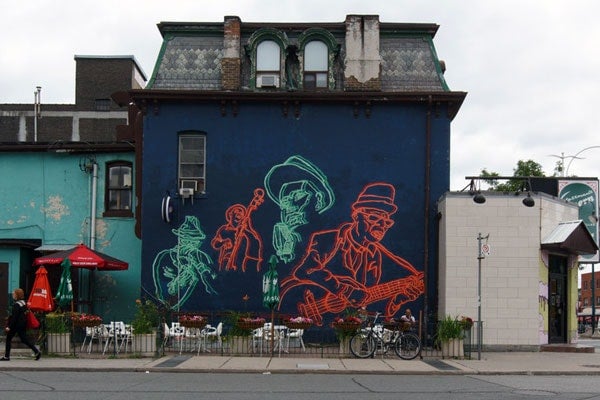
Why does Toronto have the largest concentration of artists in Canada?
Published: December 17, 2014
In the age of globalization, it’s easy to imagine that cities might become less relevant. But there’s mounting evidence that the opposite, in fact, is true.
“Cities facilitate social learning – a trigger for innovation,” says Deborah Leslie of the department of geography. “Innovation is social, it’s interactive. And it happens at the scale of city-regions.”
With cities around the world racing to establish themselves as innovation centres, securing the best and brightest – and harnessing their creativity – is more important than ever. “Jobs are key to attracting talent. But quality of life matters, too,” says Leslie. “A vibrant music scene, restaurants, galleries, cultural events, authentic neighbourhoods…These things help attract and retain great people.”
But a thriving arts scene is not just a lifestyle perk.
“Art is an important sector in its own right,” Leslie says, pointing to Toronto’s flourishing television and film industries as an example. “And design, art and branding help sell products of all kinds.”
What's more, the presence of a lively, diverse arts community helps stimulate innovation in other, unrelated sectors of the economy.
“We used to think that innovation was the result of learning within industry clusters. More recently, we’ve come to understand that knowledge transfers between industries are even more important – and produce much more dramatic innovation.”
With creativity and innovation tied so closely to economic performance in the global marketplace, Leslie and her colleagues, Shauna Brail and Mia Hunt, have been turning their attention to understanding what draws creative people to Toronto.
“Toronto has the largest concentration of artists in the country. But it’s not a major international art hub like New York or Berlin. We wanted to understand what keeps artists rooted here,” Leslie explains.
Her research shows that while various considerations – including employment prospects and quality of life – shape artists’ decisions to come to Toronto, multiculturalism is an important part of what keeps them there.
“Diversity offers a range of experiences. It inspires creative people, exposes them to techniques and traditions from different cultures, and creates a broader local market for their work.”
Toronto already recognizes the relationship between creativity and cultural diversity, for example in its 2003 Culture Plan for the Creative City. But Leslie and her colleagues found that multiculturalism doesn’t always fully deliver on its promise.
“Toronto’s diversity isn’t well reflected in local artistic circles. Newcomers, First Nations artists and artists of colour often feel excluded from the city’s artistic networks – a key to career advancement in creative industries.” Barriers include language, social codes, lack of mentorship opportunities, financial constraints and the marginalization of art that is perceived to be or constructed as 'foreign' or 'exotic'.
“We mustn’t take diversity for granted, or treat it as a spectacle,” says Leslie. “A diverse arts community demands equal access to public institutions, respect for a range of artistic styles, and support for individual voices and new ideas.”
Leslie advocates policy and funding initiatives to address discrimination in the art world and support diversity in the arts. But there’s room for individual action, too. “Artists need our support. Get out and expose yourself to new art forms, new ideas and new perspectives. Be curious, explore and engage!”
Leslie’s research is part of a new book, Seeking Talent for Creative Cities: The Social Dynamics of Innovation, edited by Jill L. Grant.


